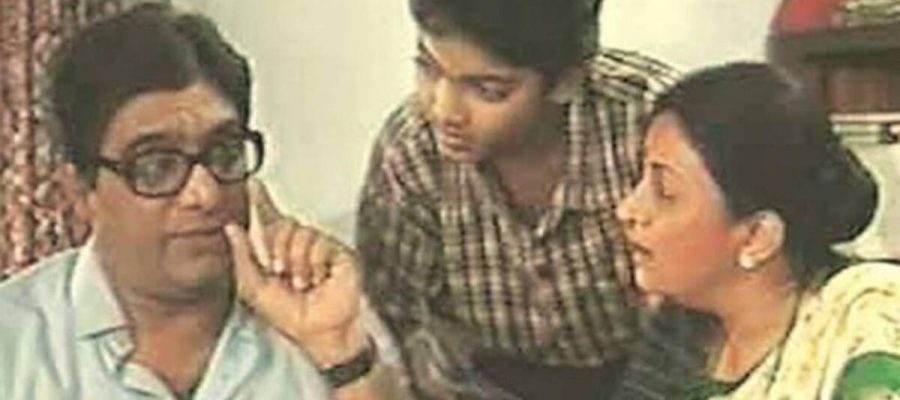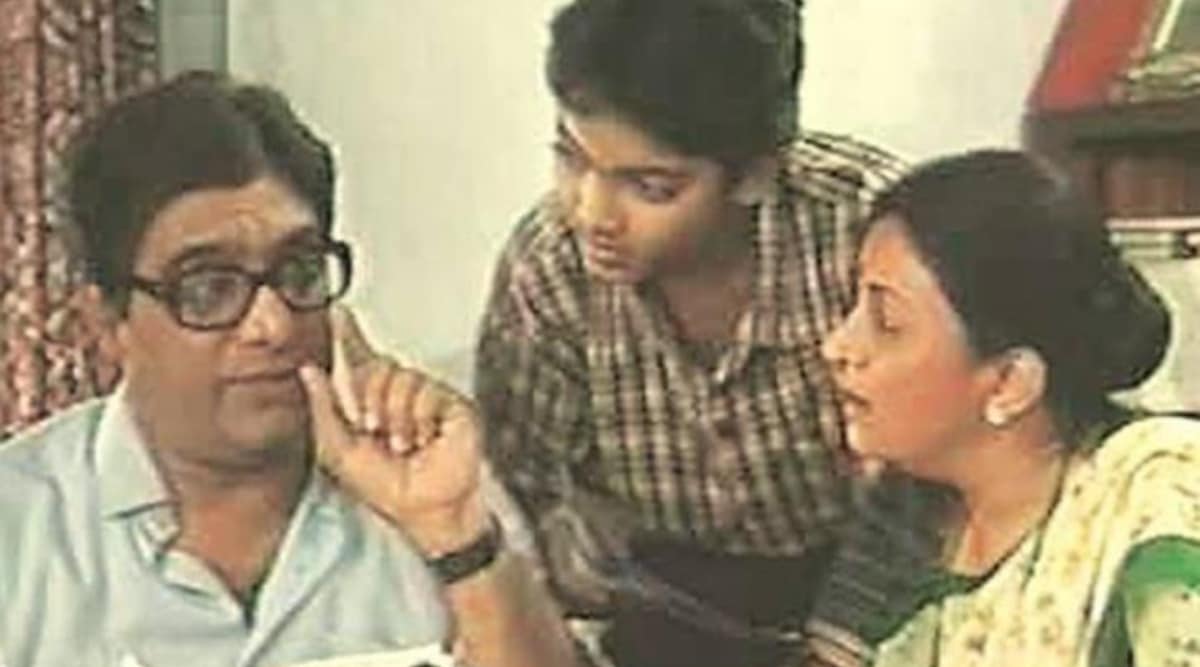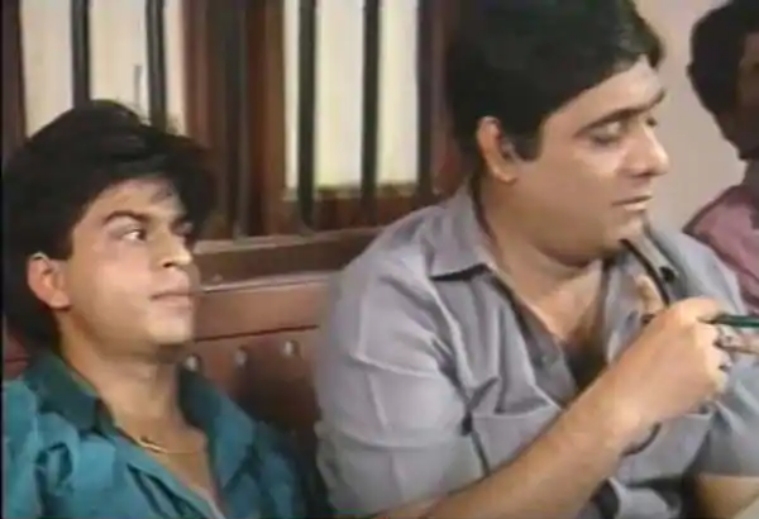The great RX Laxman and Kundan Shah came together to create the well-loved sitcom that looked at an ordinary family and their ordinary situations. Here's taking a trip down the memory lane.
Nosy neighbours, maid problems, office politics, water shortages, domestic quibbling and other sundry middle-class issues are at the heart of Wagle Ki Duniya. It is steeped in a striking middle-classness that we can only romanticise today. First aired in late 1980s on Doordarshan National, this bittersweet comedy of everyday life reflected the pre-liberalised Indian experience that, in hindsight, looks like a different universe many galaxies away. Not yet consumerist, the middle-class was grappling with pursuing ambition/prosperity versus retaining the old value system. This was an era when a Fiat car could make you appear rich and buying a colour TV set was a really big deal. Starring Anjan Srivastav and Bharati Achrekar, Wagle Ki Duniya was the brainchild of the legendary cartoonist RK Laxman. The sitcom made Srivastav and Achrekar household names during what many agree was Doordarshan’s bumper crop period. Mr Wagle’s marriage, home and their two sons form the show’s central relationship. Srivastav’s Mr Wagle is perhaps the commonest of Laxman’s Common Man, that great Indian observer wrapped in a checked jacket, dhoti and toothbrush moustache who magically appears in all Laxman frames and finds any situation amusing.
For Wagle, the situations are never at a breaking point the way it is for the Common Man. But then, Wagle is not a spectator. He’s living in the India that supplies the Common Man with a bottomless pit of absurdities. Directed by Kundan Shah, a master humorist himself, Wagle Ki Duniya crackles with both sympathy and comedy. Upstanding and honest, Wagle works as a clerk while Achrekar plays his dutiful wife Radhika. Despite the difficulties, foibles and disappointments, Wagle tries to put up a good show and remains at core an optimist in episode after episode. His earnest goofiness and idealism remind you of another Kundan Shah creation. That is the loveable loser Sunil, from Kabhi Haan Kabhi Naa in what is arguably Shah Rukh Khan’s most unadulterated performance. It’s no coincidence that everyman Srivastav plays SRK’s father in the 1994 hit, terribly upset with his wayward son and his good-for-nothing ways.
SRK rams in
A Bollywood upstart back then, Khan, in fact, makes an appearance in one episode of Wagle Ki Duniya. The future superstar of Hindi cinema started his acting journey on Indian TV, becoming popular with Fauji. Some might see his startling entry in a speeding Maruti car in Wagle episode no 11 as probably a dress rehearsal for ‘Koi na koi chahiye’ from Deewana (1992) when he recklessly leads a gang of motorbike enthusiasts in a show of swag. In Wagle, he rams into Mr Wagle himself, quickly prompting a police case. Anyone watching the show today can be forgiven for mistaking Khan’s cringeworthy hamming as an example of his typical cute play-acting. Even his diehard fans will concede that King Khan looks like his own caricature, dialling it up to impress upon no one in particular. Like Khan, there are many things in the show that modern audiences will find hard to identify with. Take the phrase ‘owner driven car’ when Mr Wagle goes to sell his car in the second-hand market, safari suits, wall-hanging calendars or just the slow-paced life — all gone-by motifs that will surely transport the nostalgic 30/40-somethings who grew up on shows like Wagle Ki Duniya to a simpler time before smartphones, Twitter, Netflix and Starbucks Lattes took over our lives. Incidentally, one particular episode shows Mr Wagle shopping for a colour TV set and the salesman tries his best to ply him with the latest Japanese model. Not much has changed, as anyone who’s been to buy a new TV recently can vouch for. The market is still flooded with Japanese, Chinese and Korean flat screens and the bumbling salesmen are as enthusiastic at bragging about the latest features that accompany electronic items.
Laxman’s world
Kundan Shah, who died in 2017, was great at locating the absurd in the ordinary and fun in the tedium. Maker of the iconic madcap Jaane Bhi Do Yaaro, his humorous touch can be seen in Wagle. Take, for instance, a scene where a character rattles off a doctor’s degrees — “MBBS, MS, MRCF, MRCS, FRCS, MRC,” and after a brief pause, drops the punchline, “UK.” Some of that humour has not dated, neither has the characters in whose simplicity the hustling middle-classes can still find something relatable and at the end of the day, laugh along. RK Laxman, in one interview with Karan Thapar for BBC, defined his cartoons as a “critique of society, politics, stupidity and corruption.” Satire, he shrugged, taciturn as always, is “a matter of cruelty.” In Wagle, however, you can sense that Laxman has significantly toned down his infamous sarcasm and wit in favour of more gentle middle-class adventures that don’t bite. Perhaps, the conventional format of Indian TV wouldn’t have allowed Laxman a free hand, like a newspaper front page would. Either that, or even the hard-hearted Laxman found Wagle too good-natured to dish out cruelty.
Wagle Ki Duniya was one of the 1980s’ shows that best exemplified what good television was all about. Very shows like these defined TV viewing for an entire generation. What’s more, it had a bit of an afterlife, too, in the form of the retread Wagle Ki Duniya – Nayi Peedhi Naye Kissey. But the best tribute to the original show and indeed, to the unhurried 1980-90s at large, came in Ritesh Batra’s The Lunchbox (2013), in which you hear a familiar voice who happens to be the film’s protagonist Ila’s (Nimrat Kaur) neighbour. She’s not seen but only heard giving Ila tips about cooking and just indulging in friendly chit chat. That voice belonged to Bharati Achrekar.
Source: Read Full Article





